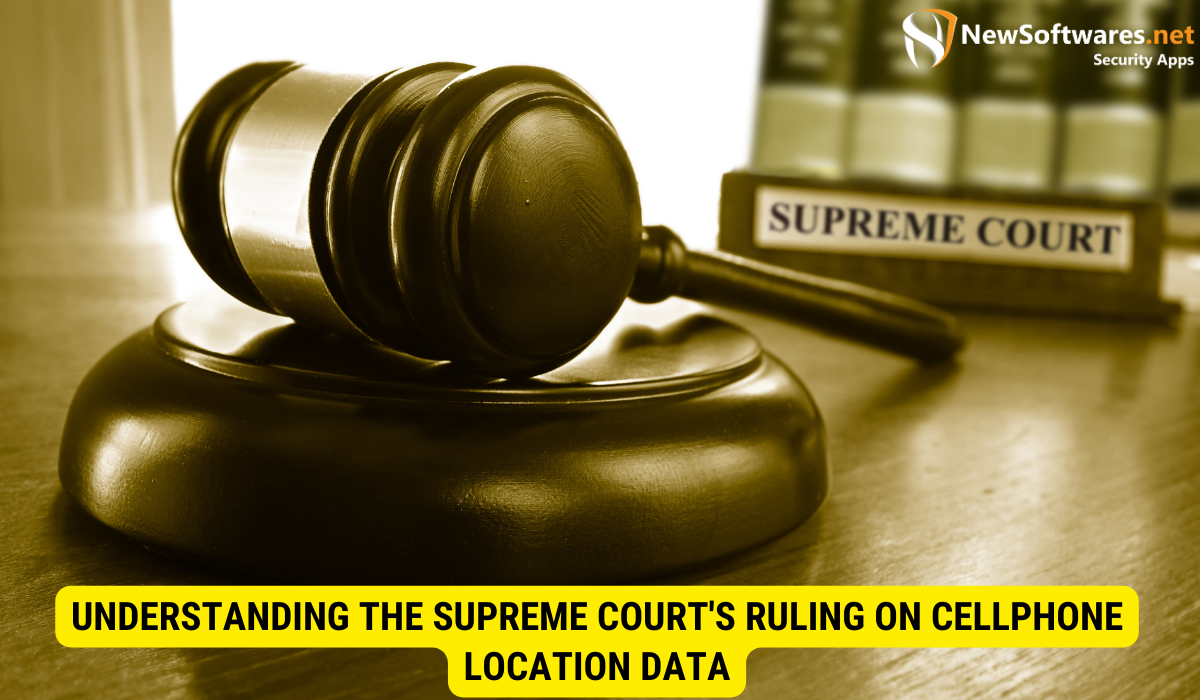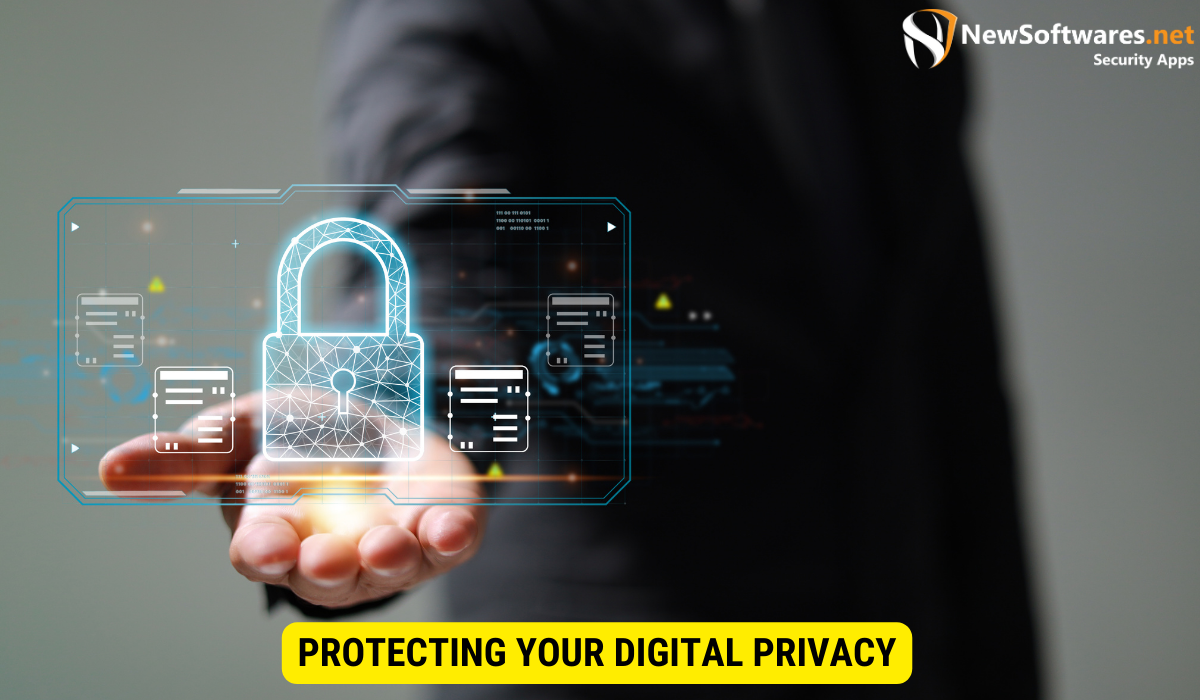The Supreme Court’s ruling on cellphone location data has significant implications for digital privacy. It establishes that law enforcement agencies need a warrant to access such data, strengthening privacy protections for individuals.
The Supreme Court’s recent ruling on cellphone location data has significant implications for your digital privacy. Understanding the details of this ruling is crucial in order to comprehend the potential changes in data collection practices, law enforcement procedures, and the future of digital privacy. Additionally, it is important to know how to protect your own digital privacy in light of this ruling.
Understanding the Supreme Court’s Ruling on Cellphone Location Data

The Basics of the Ruling
The Supreme Court ruling centered around the Fourth Amendment and the expectation of privacy. Previously, law enforcement agencies could access cellphone location data without a warrant, arguing that this information was voluntarily disclosed and did not require strong privacy protections. The court’s decision now establishes that obtaining this data without a warrant violates an individual’s Fourth Amendment rights.
This means that law enforcement authorities will now need to obtain a warrant, based on probable cause, to access an individual’s cellphone location data. This is a significant change as it introduces stricter requirements for accessing this sensitive information, enhancing the level of privacy protection for individuals.
The Supreme Court’s ruling has far-reaching implications for the balance between law enforcement needs and individual privacy rights. It recognizes the need for a higher standard of privacy protection in the digital age, where personal data is increasingly collected and stored by various service providers.
Key Players Involved in the Case
The case that led to this ruling involved Timothy Carpenter, a robbery suspect, whose cellphone location data was obtained by law enforcement authorities without a warrant. Carpenter’s legal team argued that this data intrusion violated his Fourth Amendment rights, while the government contended that the data was not subject to the same level of protection as other forms of personal information.
Timothy Carpenter’s case highlights the growing tension between law enforcement’s need for information to solve crimes and an individual’s right to privacy. The Supreme Court’s ruling acknowledges the significance of this case in shaping the legal landscape surrounding digital privacy rights.
The ruling also sheds light on the role of technology companies in safeguarding user data. Cellphone service providers, as third parties in this case, have a responsibility to protect the privacy of their users and ensure that their data is not easily accessible without proper legal authorization.
The Legal Arguments Presented
The case revolved around the interpretation of the Fourth Amendment, which protects individuals from unreasonable searches and seizures by the government. Carpenter’s legal team argued that cellphone location data should be protected under the Fourth Amendment, as it gives away detailed insights into an individual’s private life.
Cellphone location data has become a treasure trove of personal information, revealing an individual’s movements, habits, and associations. It can provide a comprehensive picture of a person’s daily life, making it a valuable resource for law enforcement investigations. However, this wealth of information also raises concerns about the erosion of privacy rights and the potential for abuse.
The government contended that accessing this data without a warrant is permissible due to the third-party doctrine, which suggests that individuals do not have a reasonable expectation of privacy in information voluntarily shared with third parties, such as cellphone service providers. However, the court rejected this argument, emphasizing that the nature and scale of modern cellphone location data necessitate a higher standard of privacy protection.
The Supreme Court’s ruling reflects the evolving understanding of privacy rights in the digital age. It recognizes that individuals have a legitimate expectation of privacy in their cellphone location data, even if it is shared with third-party service providers. This decision sets an important precedent for future cases involving the intersection of technology, privacy, and law enforcement.
Implications for Digital Privacy
Potential Changes to Data Collection Practices
As a result of this ruling, law enforcement agencies will need to adjust their practices when it comes to collecting cellphone location data. They will now have to demonstrate probable cause and obtain a warrant before accessing this information. This more stringent requirement helps strengthen the privacy safeguards in place to protect individuals’ digital footprints.
Additionally, this ruling may prompt lawmakers to reevaluate existing regulations surrounding data collection, potentially leading to more comprehensive legislation aimed at safeguarding digital privacy across various sectors.
Impact on Law Enforcement Procedures
The Supreme Court’s ruling will undoubtedly impact law enforcement procedures. Accessing cellphone location data without a warrant was a common practice, and its removal as an option will require law enforcement agencies to adapt to the new legal landscape.
While this ruling adds an extra step to the process of obtaining cellphone location data, it emphasizes the importance of striking a balance between law enforcement needs and protecting individuals’ privacy. It ensures that authorities have a justifiable reason to access such sensitive information, minimizing the potential for abuse and overreach.
The Role of Tech Companies Post-Ruling
The verdict also places tech companies in a unique position. As third-party custodians of an individual’s cellphone location data, these companies bear a responsibility to protect their users’ privacy. With the requirement of a warrant for accessing this data, tech companies will need to establish clearer protocols to ensure compliance with the ruling, and to protect the privacy interests of their users.
Future of Digital Privacy
Predictions for Upcoming Legal Battles
The Supreme Court’s ruling on cellphone location data lays the groundwork for future legal battles surrounding digital privacy. This ruling has set a precedent, strengthening the protections for individuals’ digital information. As technology continues to evolve, we can anticipate further legal challenges and debates concerning the boundaries of privacy rights in the digital realm.
How This Ruling Could Shape Privacy Laws
This landmark ruling is likely to have a far-reaching impact on privacy laws. It reaffirms the importance of privacy as a fundamental right and sets the stage for potential reforms in data protection legislation. Policymakers may be prompted to reevaluate and strengthen privacy laws to better reflect the challenges posed by advancing technology.
The Balance Between Security and Privacy
This ruling triggers a broader conversation about the balance between security and privacy. While it is crucial to provide law enforcement agencies with the necessary tools to ensure public safety, it is equally important to safeguard the privacy rights of individuals. Striking the right balance between these two competing interests is an ongoing challenge that will continue to shape the future of digital privacy.
Protecting Your Digital Privacy

Understanding Your Digital Rights
With this ruling highlighting the significance of digital privacy, it is crucial for individuals to be aware of their rights. Familiarize yourself with the laws, regulations, and court precedents that protect your digital privacy. Stay informed about any changes or new developments in these areas to ensure your rights are adequately protected.
Steps to Enhance Your Digital Privacy
There are several steps you can take to enhance your digital privacy. Start by reviewing the privacy settings on your devices and applications, ensuring they align with your preferences. Opt for strong, unique passwords for all your online accounts and consider using password managers to streamline this process. Take advantage of encryption technologies to secure your online communications and data.
Regularly update your devices and applications, as these updates often contain important security patches. Be cautious when sharing personal information online and familiarize yourself with privacy policies before providing any data to websites or applications. By implementing these proactive measures, you can take control of your digital privacy and reduce the risk of unauthorized access to your personal information.
The Role of Encryption in Protecting Privacy
Encryption plays a pivotal role in protecting digital privacy. It scrambles data, rendering it unreadable to unauthorized parties. Embrace the use of encrypted messaging apps, virtual private networks (VPNs), and secure browsing options to add an extra layer of protection to your online activities. By utilizing encryption technologies, you can significantly enhance your digital privacy.
Key Takeaways
- The Supreme Court ruling requires law enforcement to obtain a warrant before accessing an individual’s cellphone location data, strengthening privacy safeguards.
- This ruling may bring changes in data collection practices and future privacy legislation to protect individuals’ digital privacy.
- Tech companies are expected to establish protocols to comply with the warrant requirement and protect user privacy.
- This ruling triggers discussions about the balance between security and privacy in the digital age.
- To protect your digital privacy, understand your rights, take proactive steps to enhance privacy, and utilize encryption technologies.
FAQs
Q: What prompted the Supreme Court to rule on cellphone location data privacy?
A: The case involving Timothy Carpenter brought the issue of warrantless access to cellphone location data to the Supreme Court. Carpenter’s legal team argued that this practice violated his Fourth Amendment rights, leading to the Supreme Court examining the matter.
Q: How does the ruling impact law enforcement investigations?
A: The ruling adds an additional requirement for law enforcement agencies to obtain a warrant before accessing an individual’s cellphone location data. It serves as a reminder that privacy rights must be balanced with law enforcement needs, ensuring a reasonable expectation of privacy for individuals.
Q: How can individuals protect their digital privacy?
A: Individuals can protect their digital privacy by adopting proactive measures such as reviewing privacy settings, using strong passwords and encryption technologies, regularly updating devices, and being cautious about sharing personal information online.
Q: Will this ruling impact how tech companies handle users’ cellphone location data?
A: Yes, the ruling will require tech companies to establish clearer protocols to comply with the warrant requirement and protect their users’ privacy. They will need to ensure they handle user data in a manner that respects individual privacy rights.
Q: What can we expect in terms of future privacy laws?
A: The ruling sets a precedent for strengthening privacy protections and may lead to future privacy law reforms. Policymakers will likely reevaluate existing regulations to better address the challenges posed by advancing technology and protect individuals’ digital privacy.
Conclusion
In conclusion, the Supreme Court’s ruling on cellphone location data serves as a significant milestone in enhancing digital privacy protections. It establishes the need for a warrant to access this sensitive information and prompts discussions about the balance between security and privacy. By understanding your digital rights, taking proactive steps to protect your privacy, and leveraging encryption technologies, you can safeguard your digital footprint and help shape the future of privacy laws.
